Our sixth day was one of the highlights of the entire trip. We visited an indigenous community in the Amazon rainforest to learn about their traditional food and farming. I highly recommend checking out my previous diary about their use of slash and burn agriculture. This diary focuses on the crops they grow.
My trip was organized by Global Exchange and Food First. You can find out about future Food Sovereignty tours at the link.
We spent a day in the Amazon with the Tacana-speaking indigenous community of San Miguel del Bala. San Miguel del Bala, located on the Beni River, right near Madidi National Park, obtains its food through hunting, fishing, and farming. This post focuses on the many crops they grow.
The people of San Miguel del Bala grow a large number of crops, some which are native to the Amazon, and many which are not. Rice, which is not native to the Amazon, is the only crop on which they use pesticides.
When looking at the crops grown in the forest, it's useful to consider the different heights of each plant. As Daniel noted in his presentation that I wrote about yesterday, plants in the Amazon must compete for both nutrients and light. Fortunately, many of the shorter species are able to grow in partial shade. The people of San Miguel del Bala grow pineapple on the forest floor, four varieties of cassava, countless varieties of fruit trees, palm trees used for roof thatching, handicrafts, oils, and fruit, and tall lumber species, thus making an excellent use of vertical space.
Yesterday I wrote about an area we visited that had been burned exactly a year ago. After burning the area, the people of San Miguel del Bala planted it in rice and cassava. They have already harvested the rice (this past March), and the cassava will continue to grow for six more months. Planted among the rice and cassava, we also saw pineapple, bananas (they grow five different varieties), cacao, sugarcane, papaya, and pacay (ice cream bean) growing. We also saw a "Panama hat palm" growing there (Carludovica palmata).
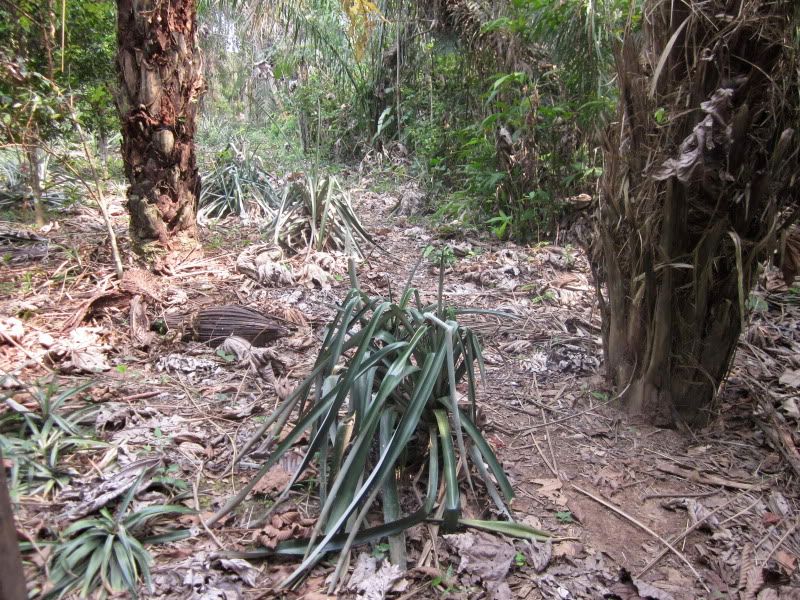
Pineapple
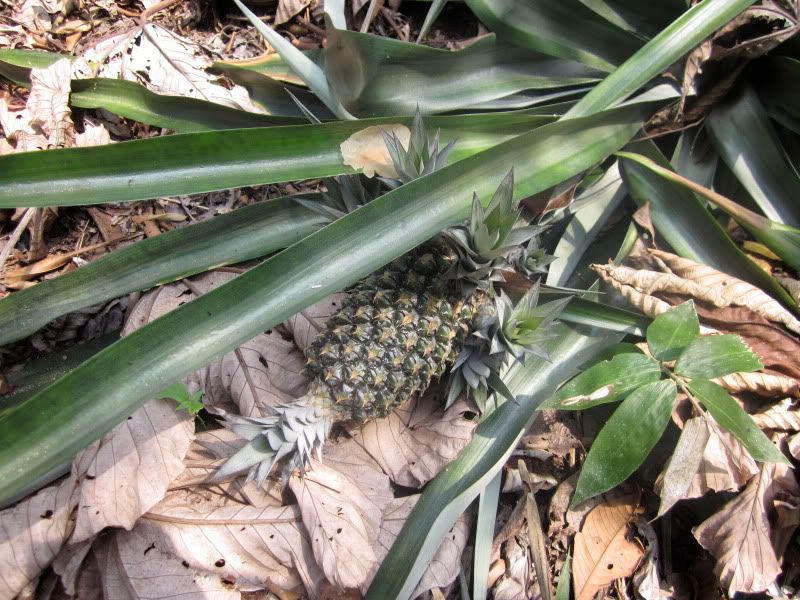
Pineapple, a few weeks from harvest.
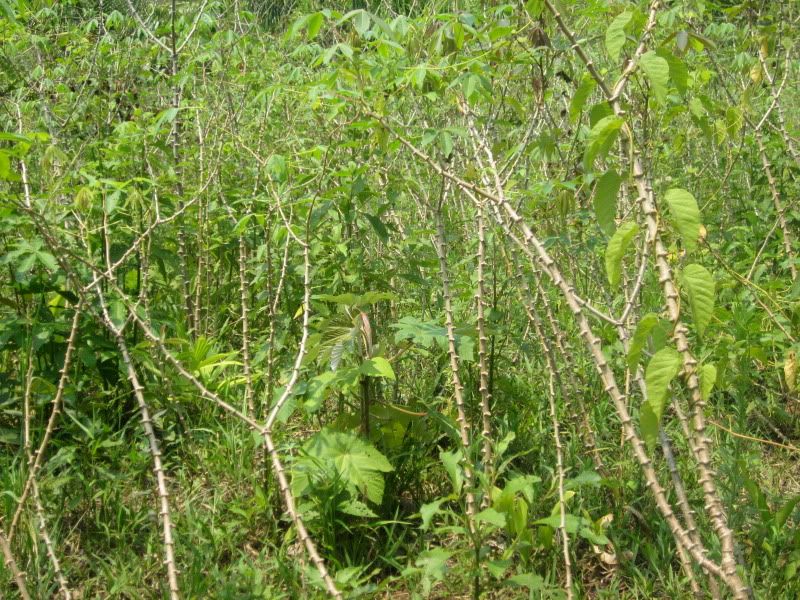
One of the four varieties of cassava they grow.
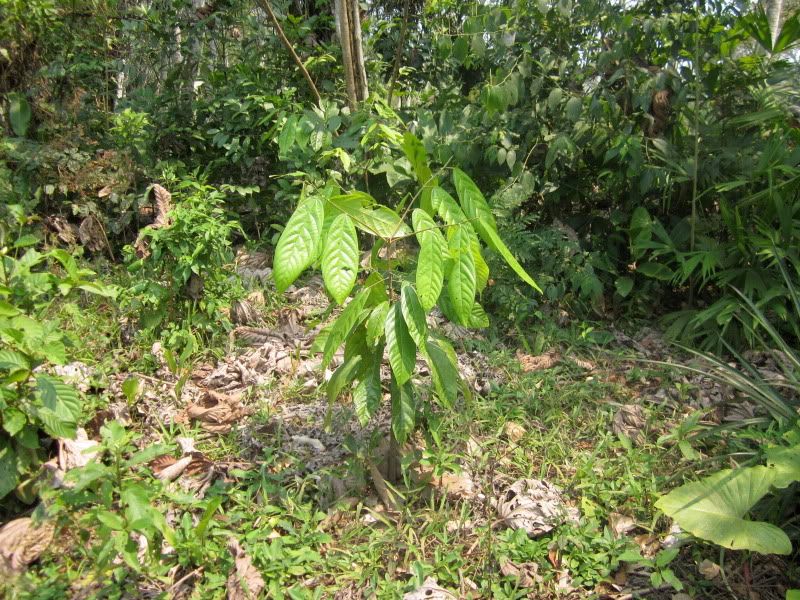
Cacao
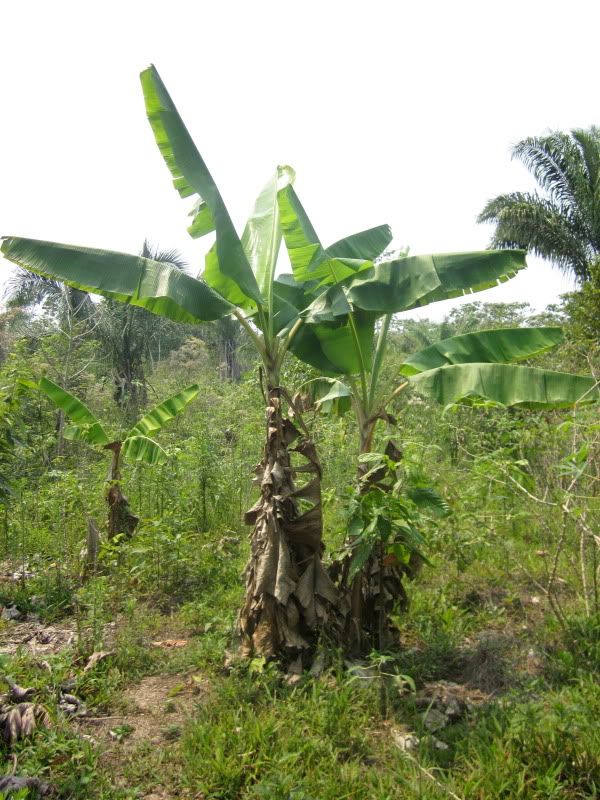
Banana trees
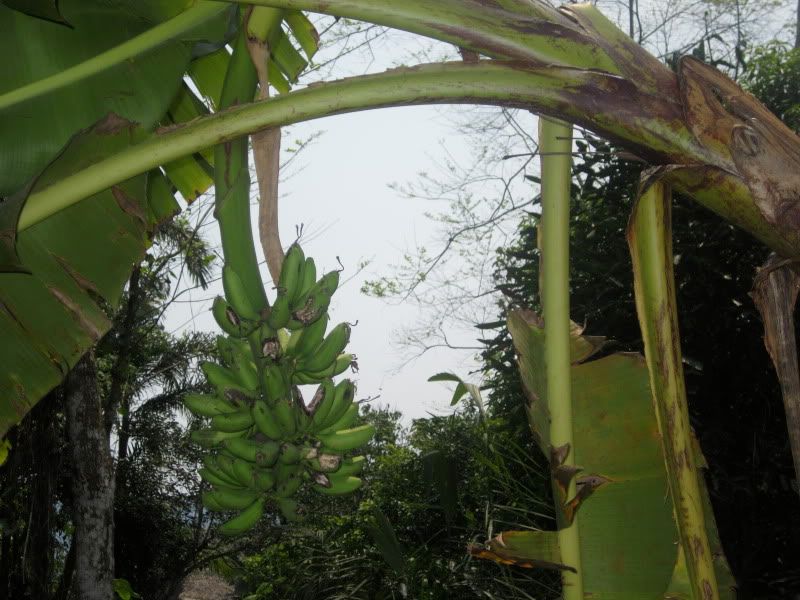
Bananas
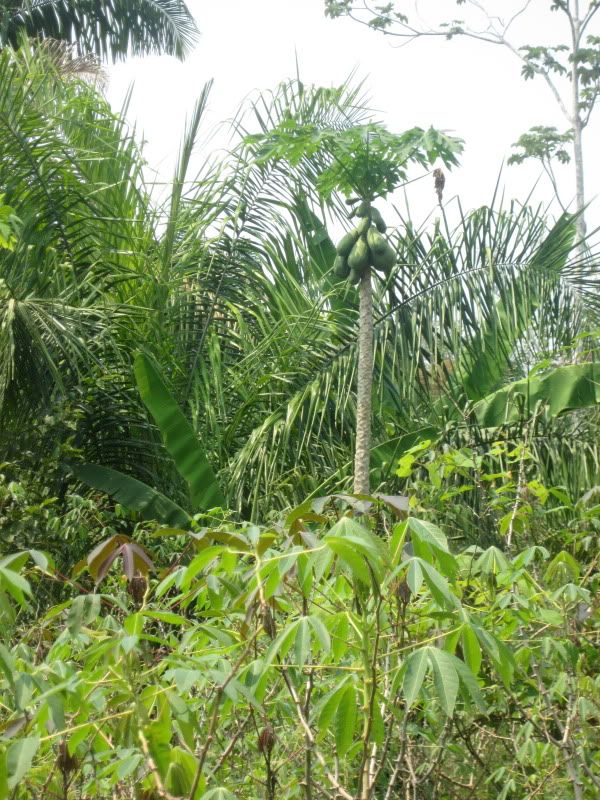
A papaya tree
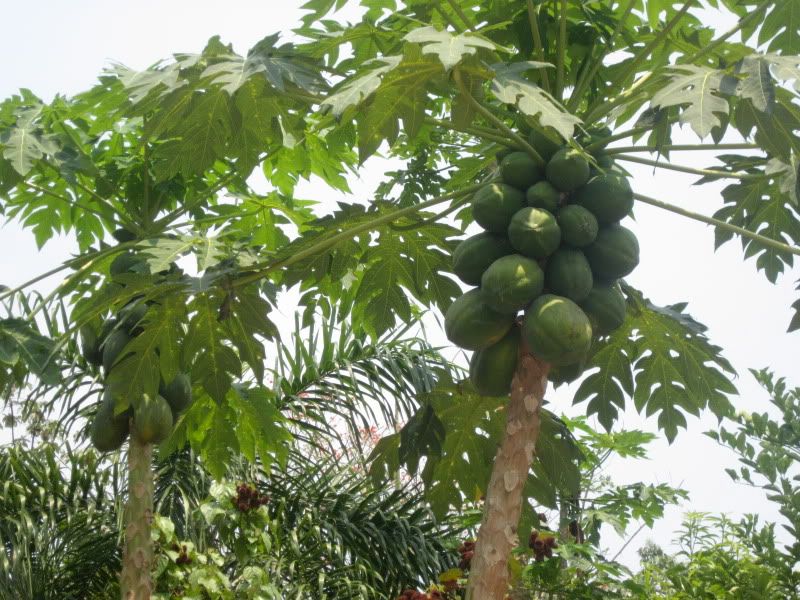
Papayas
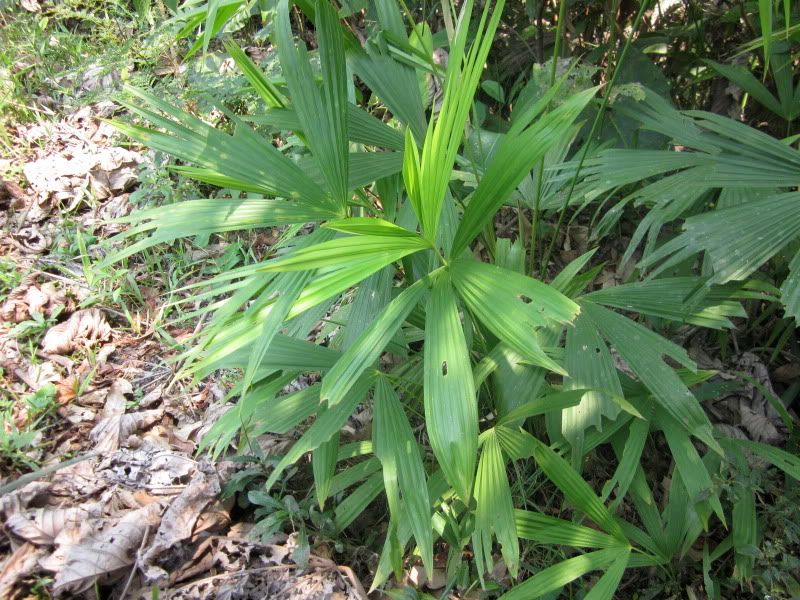
A "Panama hat palm," which isn't truly a palm tree at all
As I mentioned above, they have four varieties of cassava. Of those varieties, some are used to make a type of flour. Others can be eaten as a starchy root or used to make a homemade type of alcohol called "chicha." Our guide estimates that about half of that variety of cassava is eaten as food and the other half goes to make chicha. Below, you can see his own homemade chicha, which he graciously let us try. It had a mild flavor but I did not care for it. (Later we tried chicha made from corn, which I liked a lot.)
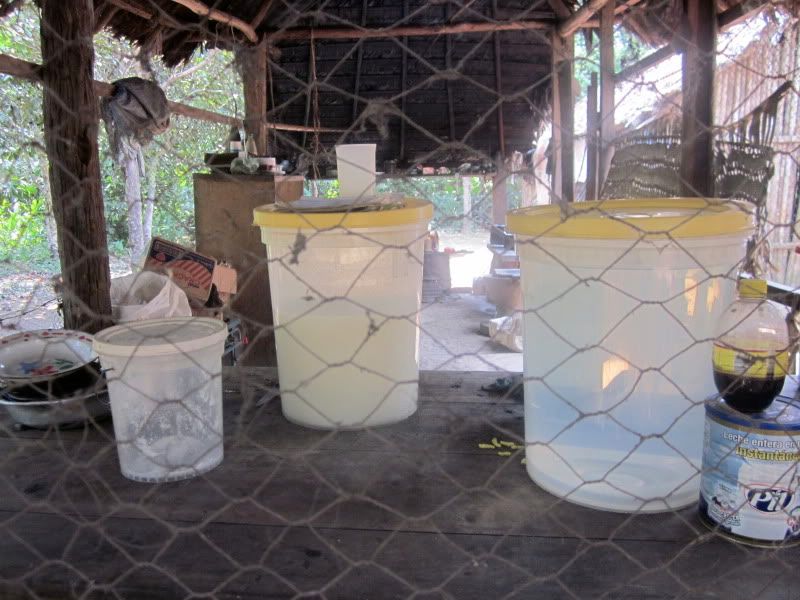
The bucket with the opaque-looking liquid and the cup on top is full of chicha, a homemade liquor made from cassava. It can also be made from corn.
In addition to the crops mentioned above, they also grow coconut, pomelos, grapefruits, orange, mandarin, lime, lemon, cherimoya, guava, passionfruit, starfruit, mango, passionfruit, tamarind, and acai. They also grow a number of less familiar fruits, like Brazilian apple, acerola, ocoro (Rheedia brasiliensis), and achachairú. They also grow spices like cinnamon, nutmeg, and mace (nutmeg and mace come from the same plant). And they grow coffee. However, the elevation is too low to grow good coffee here.
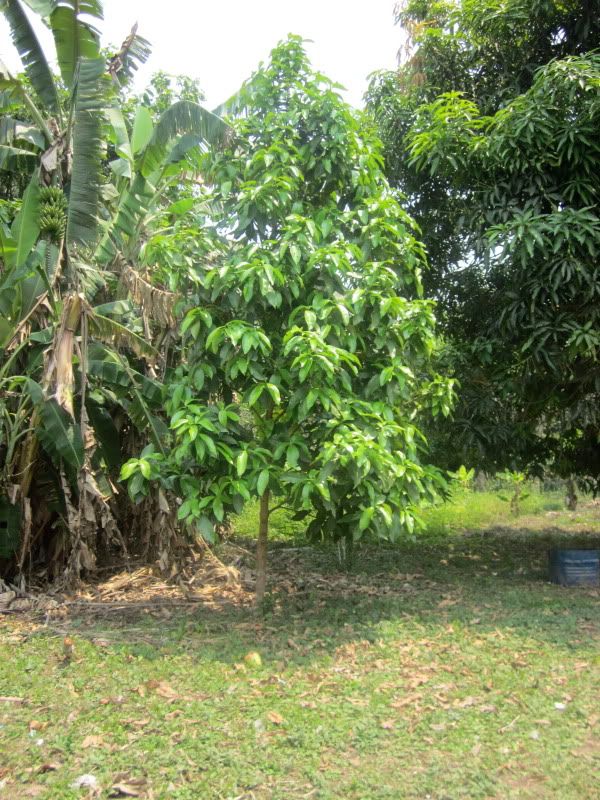
A Brazilian apple tree.
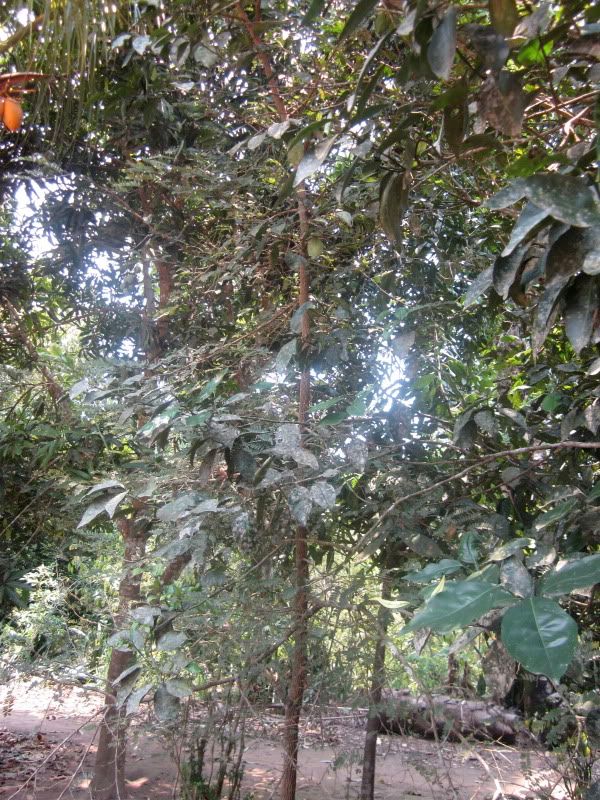
A tamarind tree
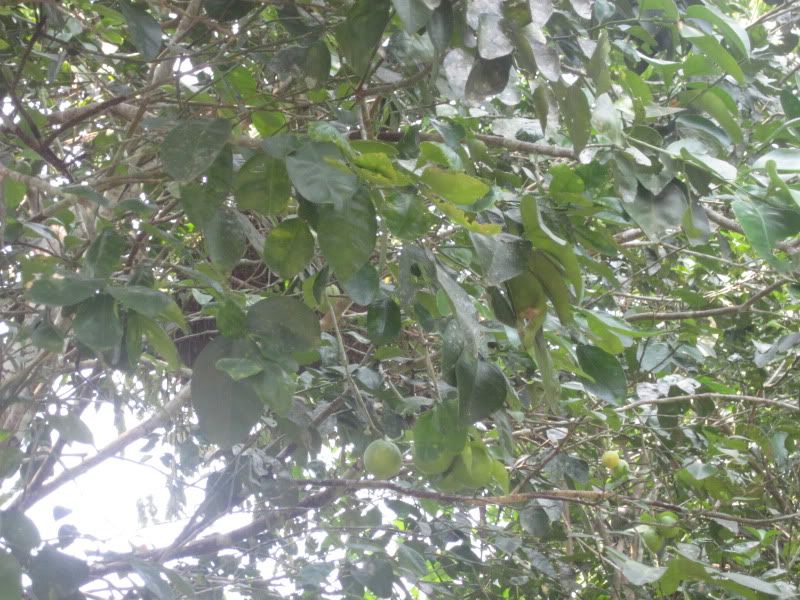
Limes. A trick to identifying citrus trees is to tear one of the leaves from the tree and then smell it. It will smell like whichever fruit the tree is growing.
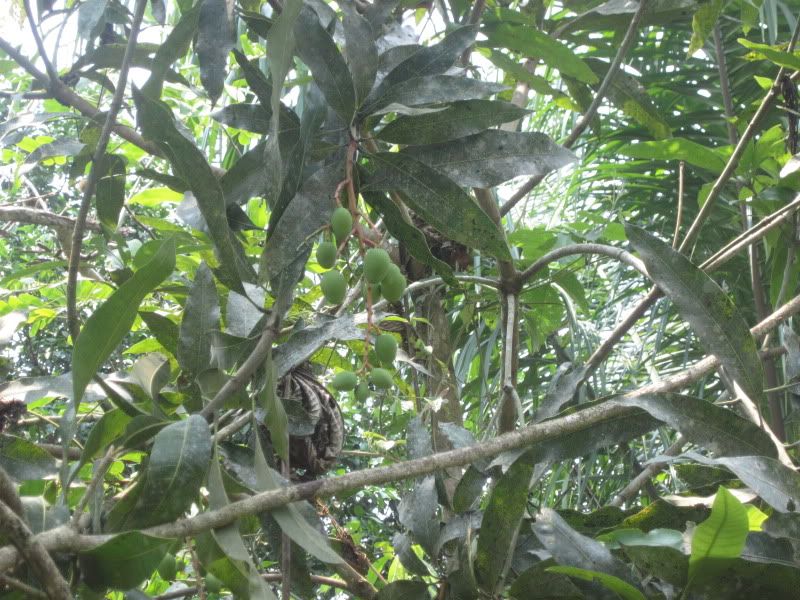
A variety of mangoes called grape mangoes
As part of our tour, they showed us their sugarcane press. It's wooden and entirely human-powered, and I'm told that sugarcane presses like this have been in use for several hundred years. In other sugar producing countries, they now have faster and less manual machines for this, but here in Bolivia's Amazon region, this is what they use. As you can see in the pictures, it takes at least three people to operate it. After they pressed the juice (called "guarapo") from the sugarcane, they strained it and served it to use with slices of lemon.
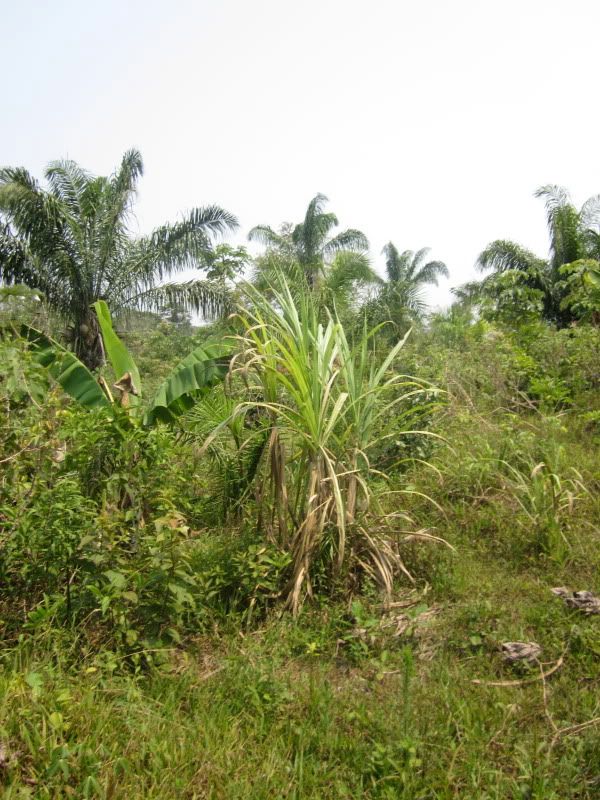
Sugarcane
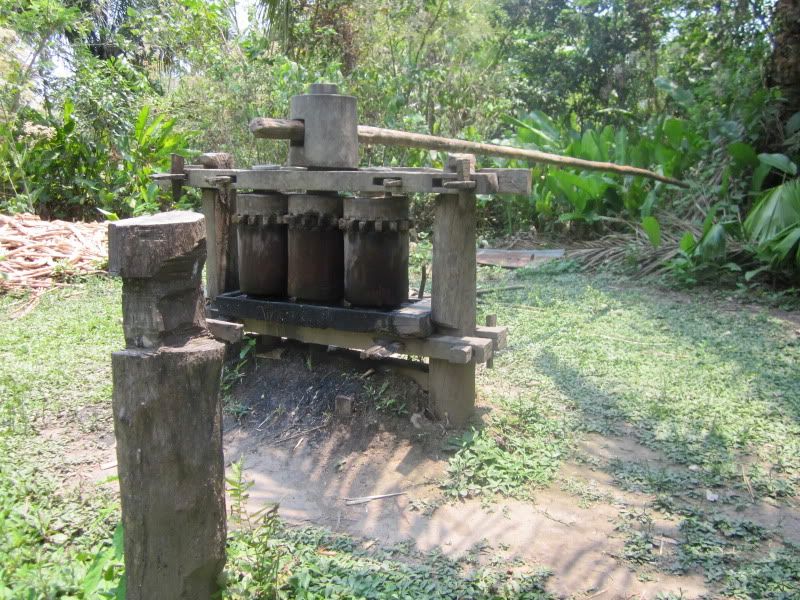
The sugarcane press
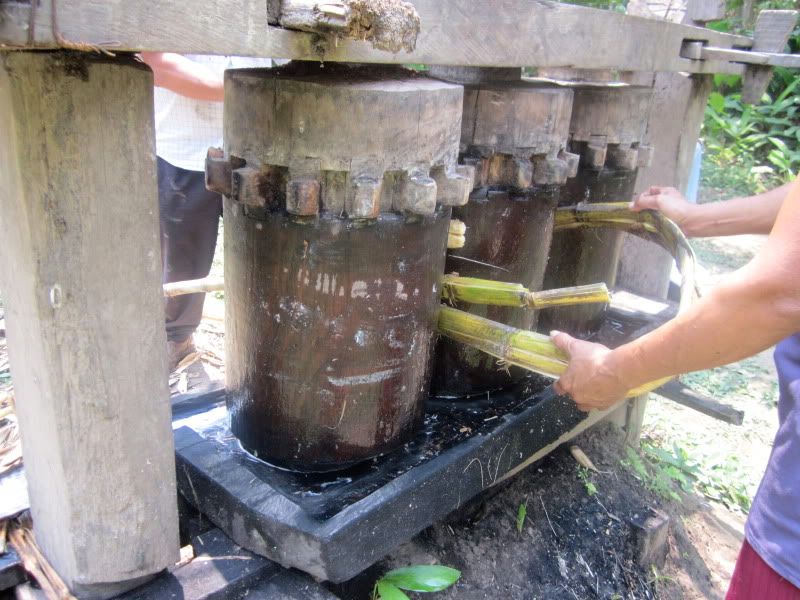
Pressing the cane
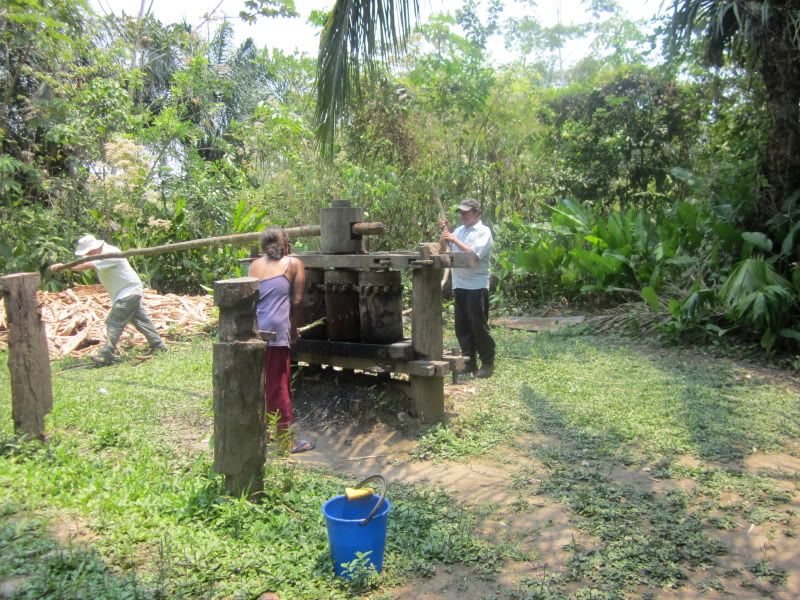
Pressing the cane
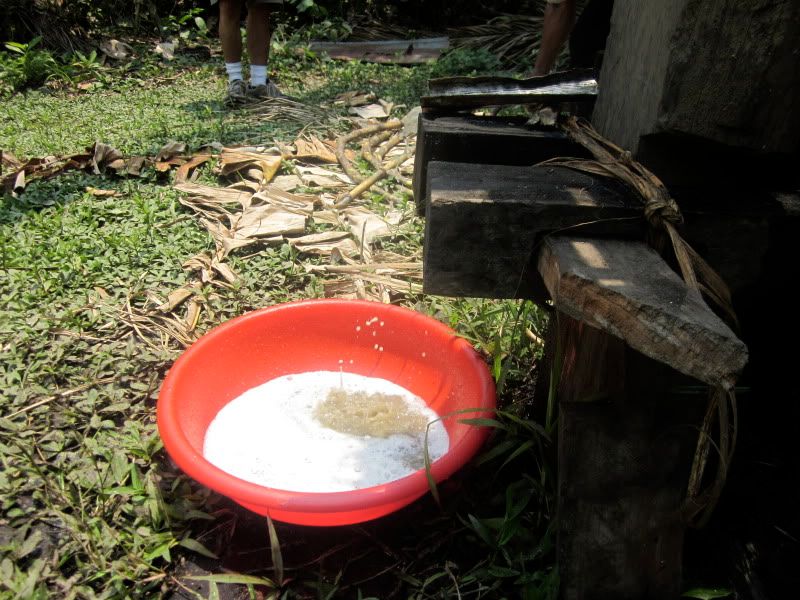
Here's what came out of the press
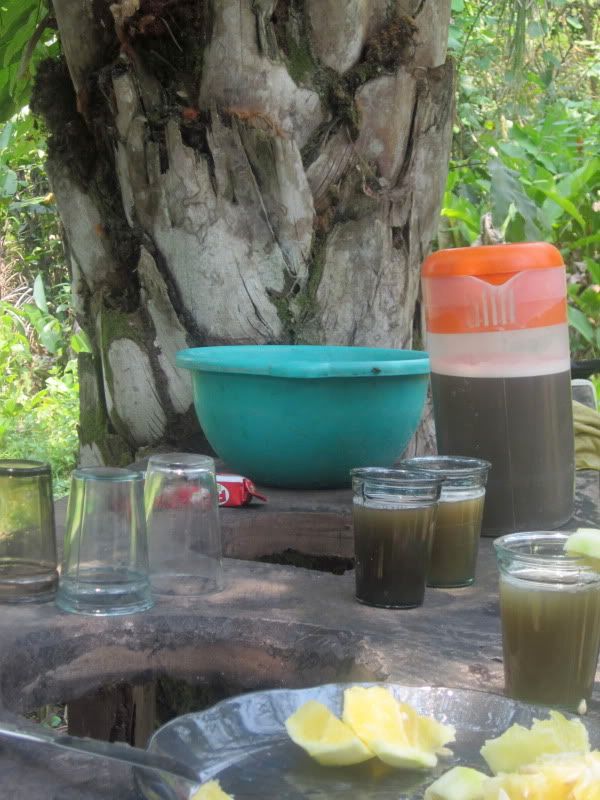
Mmm... Guarapo
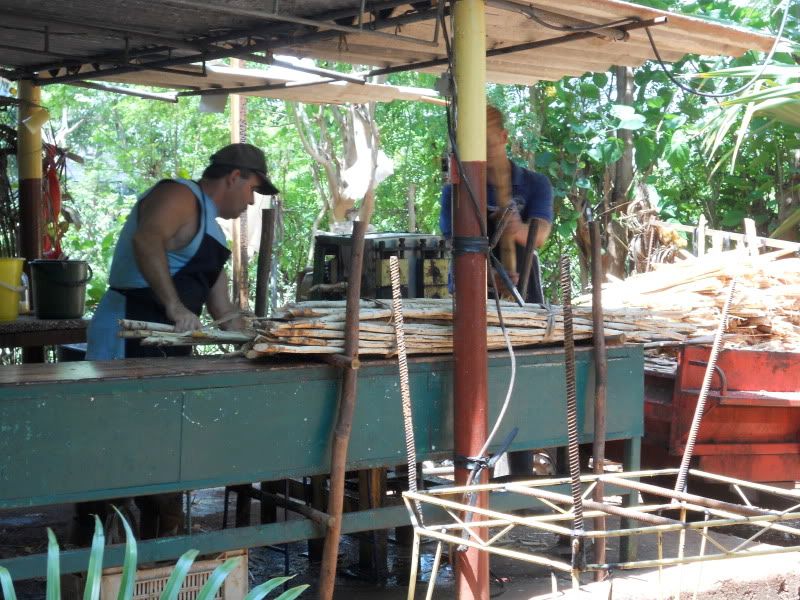
Here's how they make guarapo in Cuba.
Our guide told us that people of his community sell sugar products in the Sunday fair in Rurrenabaque. To do this, a family will cut cane on Thursday, grind it on Friday, and then boil it in a big copper cauldron to reduce it to molasses or to make a sugarloaf from it. It takes 600 canes to produce 250 liters of guarapo, and those 250 liters then become only 15 kilos of sugarloaf, which each sell for 10 Bolivianos. So that's half a week's work for a total of 150 Bolivianos, or about $21.50.
After the harvest, our guide told us they use the bagasse - the sugarcane that has already had the juice squeezed from it - either as cattle feed or as mulch. Also, because the cane is grown on an area with decent soils, they can get seven harvests of sugarcane from an area before they need to move on. Daniel told us that on his farm - where the soil isn't as good - he can only get one or two harvests before he has to abandon an area and let the forest reclaim it.
In parts of the world better suited to growing sugarcane (with more sun and less rain), the economics would work much better. Daniel estimates that it takes six liters of guarapo from sugarcane grown on his farm to make one liter of molasses. Our guide told us the ratio for his sugarcane was actually ten to one. Daniel said that in a more favorable sugar-growing area, the ratio would be three to one, making sugar production much more lucrative. Here, Daniel said, the economics only work if you use unpaid family labor. If you were paying someone a living wage to do several days of hard work, only to earn a mere $21.50 for selling the sugar, you couldn't make ends meet.
As we toured the community, again and again, Daniel would stop at people's homes to tell us what kind of wood or palm fronds the home and the thatching were made from. Different varieties have different properties and they are used for different things. The sugarcane press was made from a very specific kind of wood. One kind of tree was harvested to make telephone poles all over Bolivia. Here are a few examples of various trees and how they are used in the Bolivian Amazon.
Daniel introduced the palm tree in the picture below as "the most important palm tree" in this region. It is called a motacu. The motacu survives burnings, so often you will see a newly burned area with nothing standing except for several slightly charred motacu palms. The motacu produces an edible fruit with seeds that produce oil. The palm fronds can be used for thatching. (Daniel said "There are like fifteen uses of that palm tree.") Additionally, as you will see in pictures in future diaries, each tree serves as its own ecosystem, with a number of other species (epiphytes, I believe) living on it.
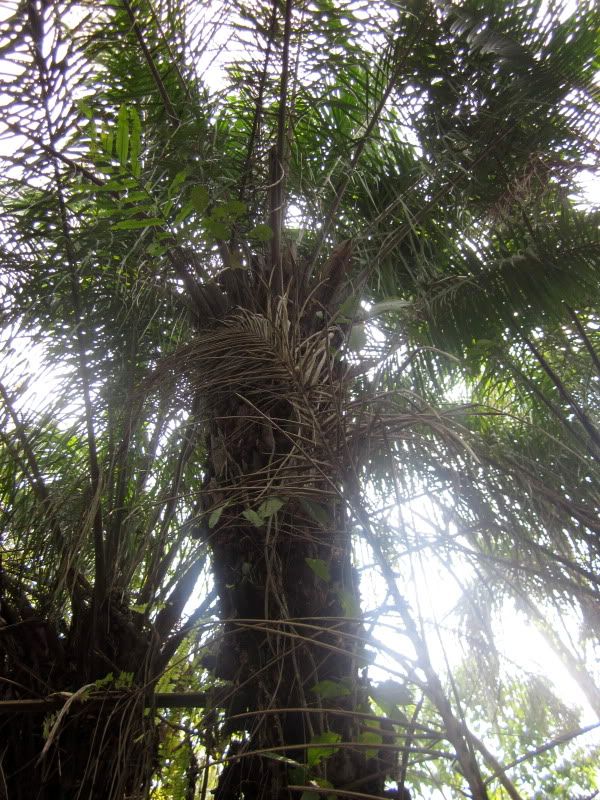
A motacu palm
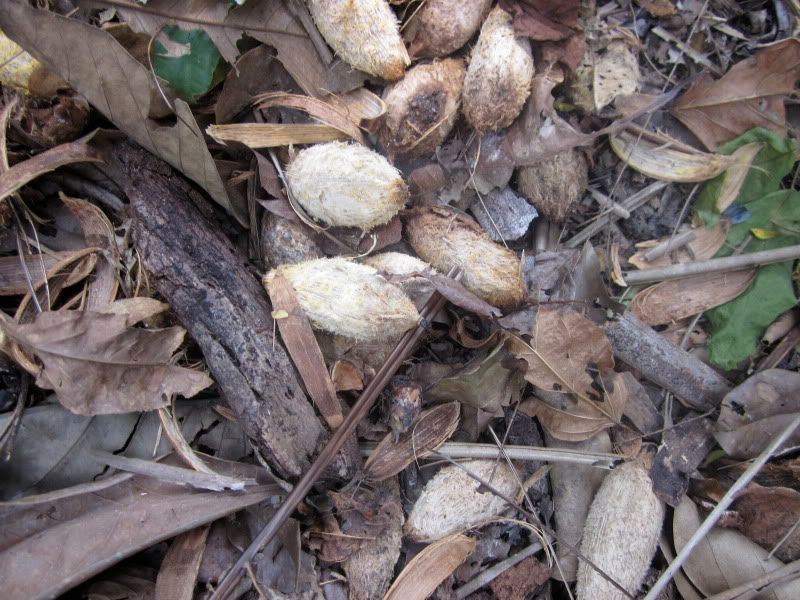
Leftovers from a snack of motacu fruit. These were eaten by a large rodent called a jochi.
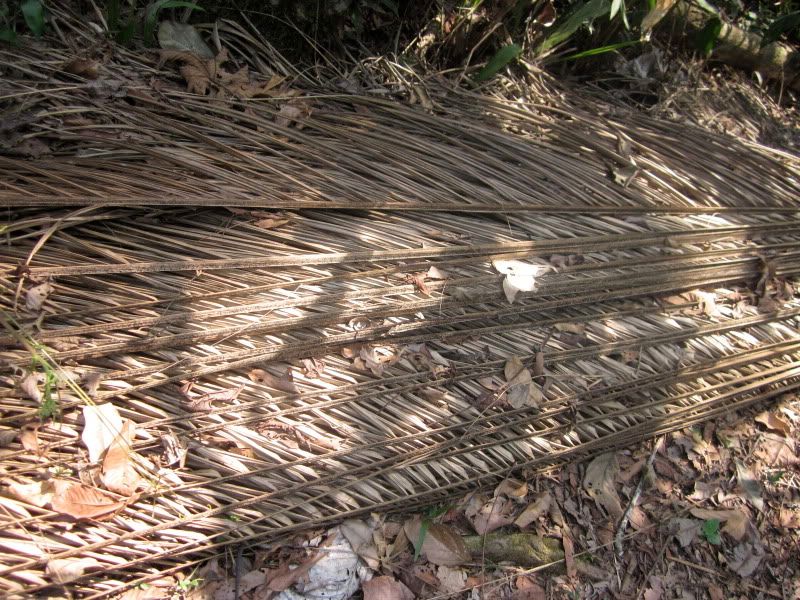
Motacu leaves, cut in half, to use for thatching.
Another multi-use tree is the peach palm, which I mentioned above. Peach palm produces a fruit that someone, somewhere, decided resembles a peach, thus giving the tree its name. The tree puts up multiple stalks, which means one stalk can be harvested for heart of palm without killing the entire tree. The fruit yields two different kinds of oils. Also, once the trunk of the tree becomes hard, it can be used to make bows and arrows.
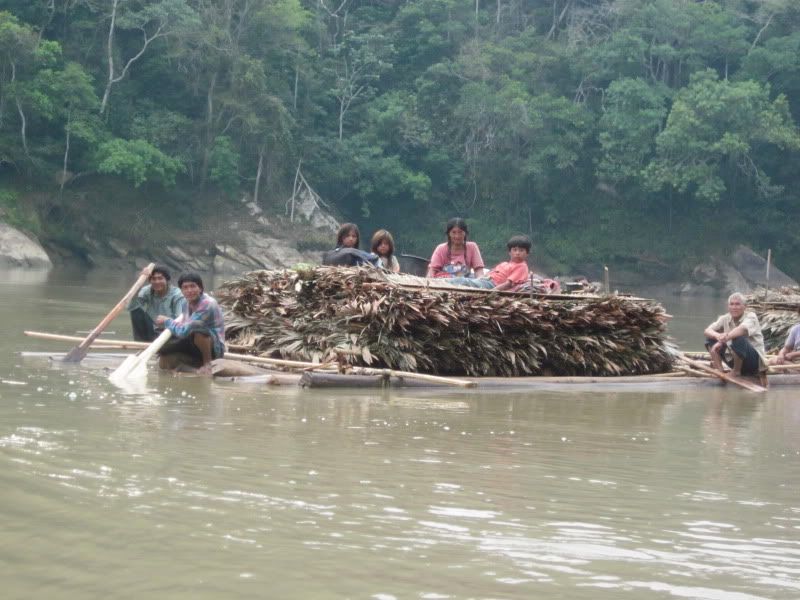
An indigenous group taking thatching to market. I believe the leaves come from the jatata palm. A thatched roof made with jatata palm fronds can last for 15-20 years.
The last crops I will leave you with before we move on to animals are peanuts and cowpeas (black eyed peas). Peanuts were likely first domesticated in or near Bolivia. Cowpeas are from Africa but they were brought to Bolivia a long time ago. Both of these crops are grown on the sandy banks of the river. This part of the river is underwater when the water rises for part of each year. The annual flooding kills any would-be weeds. Once the river recedes, the peanuts and cowpeas are planted. The rainy season is set to start soon, and the cowpeas are already harvested. The peanuts will be harvested in another month to six weeks.
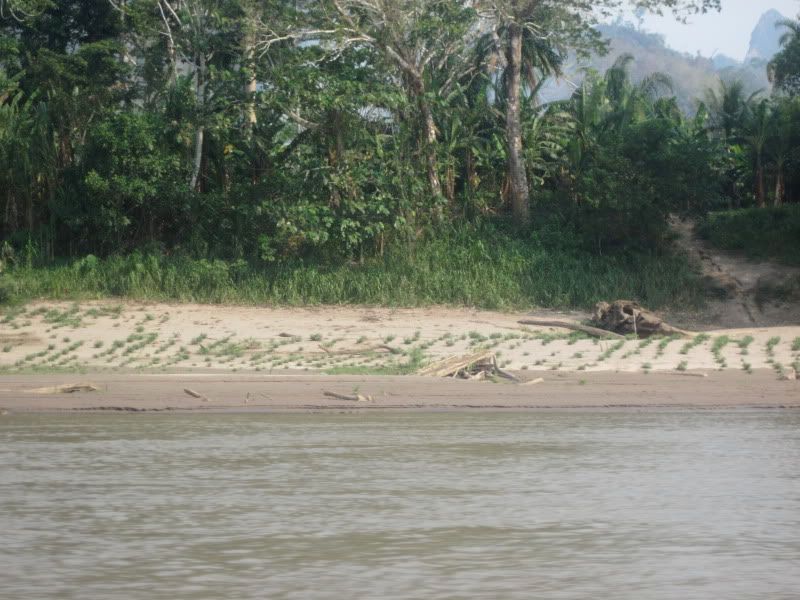
Peanuts, about 4-6 weeks from harvest

Cowpeas, already harvested
In addition to their crops, the people of San Miguel del Bala raise several types of livestock. As I mentioned above, they hunt (for wild pigs) and fish, but they also raise chickens and ducks. Some of the chickens are raised for fighting (although they are eventually eaten) and other varieties are raised for meat and eggs.
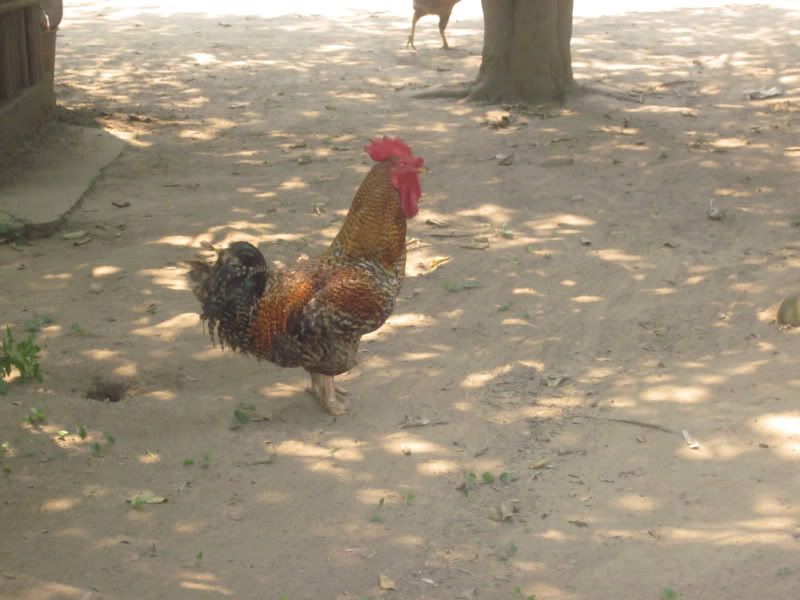
What a pretty boy!
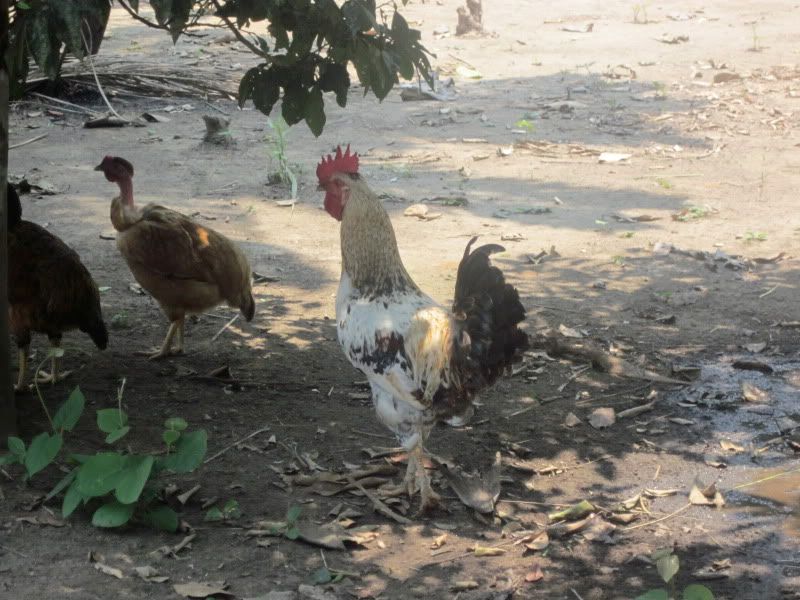
Another beauty

A mama hen and her chicks

A Muscovy duck with one of her many ducklings
I hope you've enjoyed learning about the agriculture of San Miguel del Bala. In my next post, I'll tell more about the community and the eco-tourism operation they run.
No comments:
Post a Comment